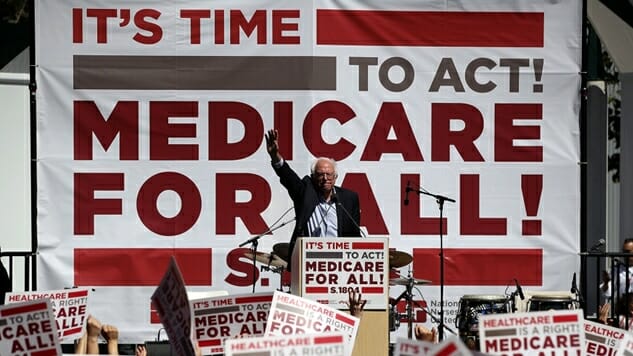New Study: Medicare for All Would Reduce Poverty by More Than 20%
Photo courtesy of Getty Politics News Medicare for All
The People’s Policy Project has crunched the numbers, and using 2018 statistics from the Census, they’ve determined that a Medicare for All program run by the federal government would lift approximately 8 million people out of poverty—a total that represents 18.8 percent of America’s 42.5 million poor. And it would reduce overall poverty by even more:
This headcount poverty measure actually understates how significant MOOP expenses are to poverty in this country. According to this same data, in 2018, the total poverty gap stood at $175.8 billion. This figure is derived by calculating how far each poor family’s income is below the poverty line and then adding those calculations together to get an aggregate amount. MOOP expenses make up $38.2 billion of that total gap, meaning that Medicare for All would cut poverty by about 22 percent.
Medical out-of-pocket expenses account for 22 percent of income expenditures for poor people, while it’s far less for those with more money. The conclusion here is staggering:
by eliminating medical out-of-pocket expenses, Medicare for All would reduce headcount poverty by 19 percent, reduce the overall poverty gap by 22 percent, and increase poor people’s incomes by 29 percent.
The PPP calls this “one of the most potent anti-poverty programs proposed thus far in the current presidential race,” and that’s before you take into account how reduced health expenditures would benefit other groups in the country, including the middle class and those just above the poverty line.